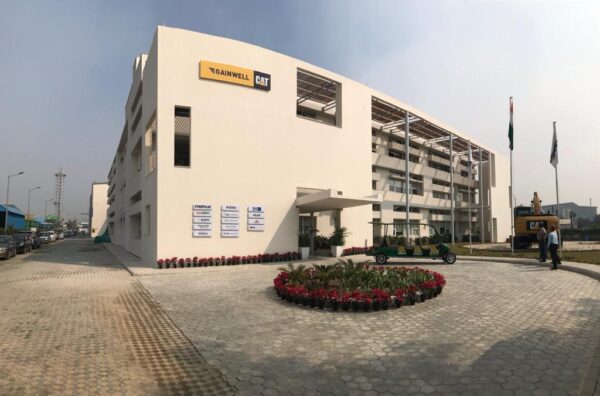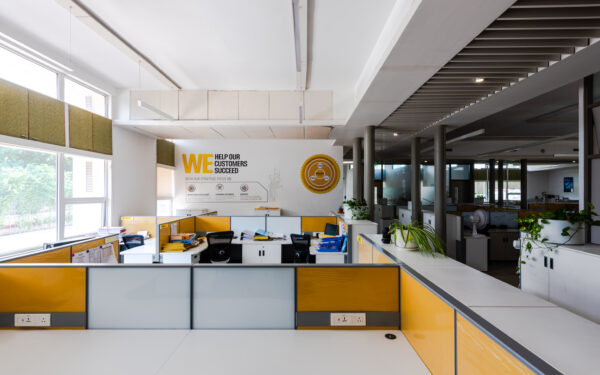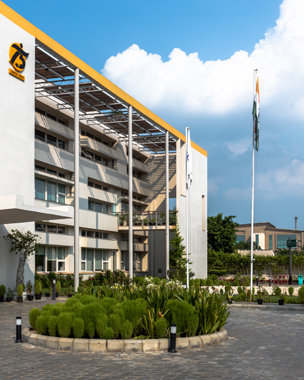Unnati Office
Greater NOIDA, Uttar Pradesh
Ventilation
The ventilation system is designed to provide 30% more outdoor air than the baseline requirement of ASHRAE Standard 62.1-2010.This significantly enhances indoor air quality and thermal comfort.
Personal cross-flow fans are installed at every desk to provide users with the opportunity to control air speeds.
Lighting Design
The building employs an energy-efficient lighting system. Energy-efficient fixtures and ballasts reduce lighting energy consumption by 66% compared to the ASHRAE Standard 90.1-2010 baseline. The overall lighting power density (LPD) is 3.6 W/m², significantly lower than the 10.9 W/m² baseline.
Lighting controls minimize internal heat gain and reduce the air-conditioning load. Occupancy sensors minimize lighting use in non-regularly occupied spaces such as toilets, storage areas, and mechanical rooms.
Approximately 90% of regularly occupied areas maintain an illuminance level between 300 lux and 3000 lux.
HVAC system
The building uses a hybrid HVAC system combining water-cooled air handling units (AHUs) and a ceiling-embedded radiant cooling system. The cooling load is distributed with 45% by the AHUs and 55% handled by the radiant system. The underfloor radiant cooling coupled with fresh air supply, reduces the total volume of air to be cooled and thus saves energy. During winter, the radiant system operates in heating mode, with pipes circulating heated water to warm the interiors. Fresh air ducts supply tempered air to maintain indoor comfort.
As per the adaptive thermal comfort model, the system is set at 25°C-26°C, ensuring adequate comfort conditions.
Indoor Air Quality
The Dedicated Outdoor Air System(DOAS) operates at 8 a.m. to remove moisture that builds up during unoccupied hours and brings down the temperature to desired level before office start-up.
CO₂ sensors are installed to monitor indoor air quality and trigger alarms if levels exceed set limits.
Metering and Monitoring
The building features advanced energy metering systems for the main power supply, chillers, internal and external lighting, air-handling units, water supply, sewage treatment plant, and the solar PV system.
Commissioning
The project followed ASHRAE-recommended commissioning, engaging a third-party commissioning agent and energy auditor. All four phases—design, construction, acceptance, and occupancy were covered to ensure proper implementation of the building envelope, mechanical, and electrical systems.






